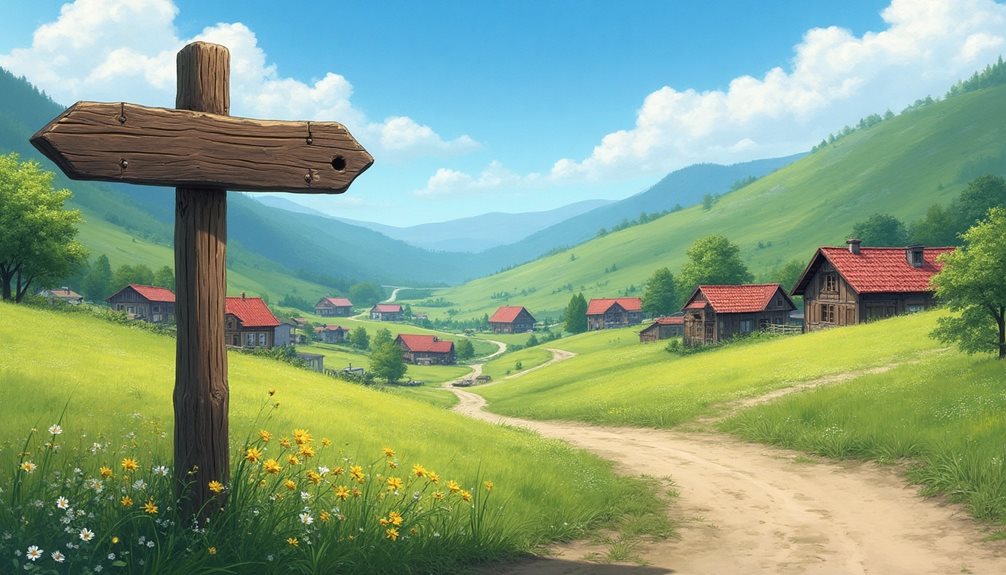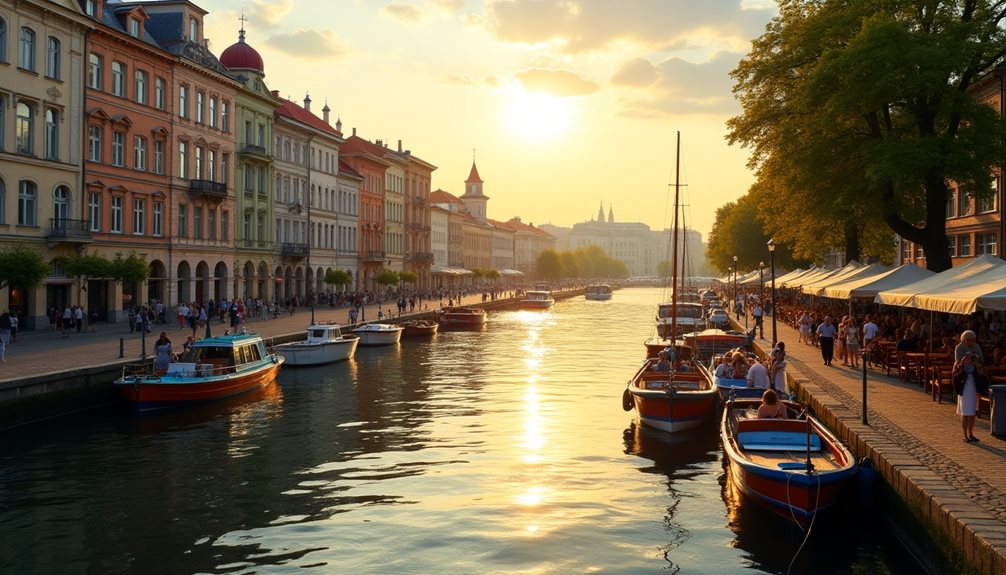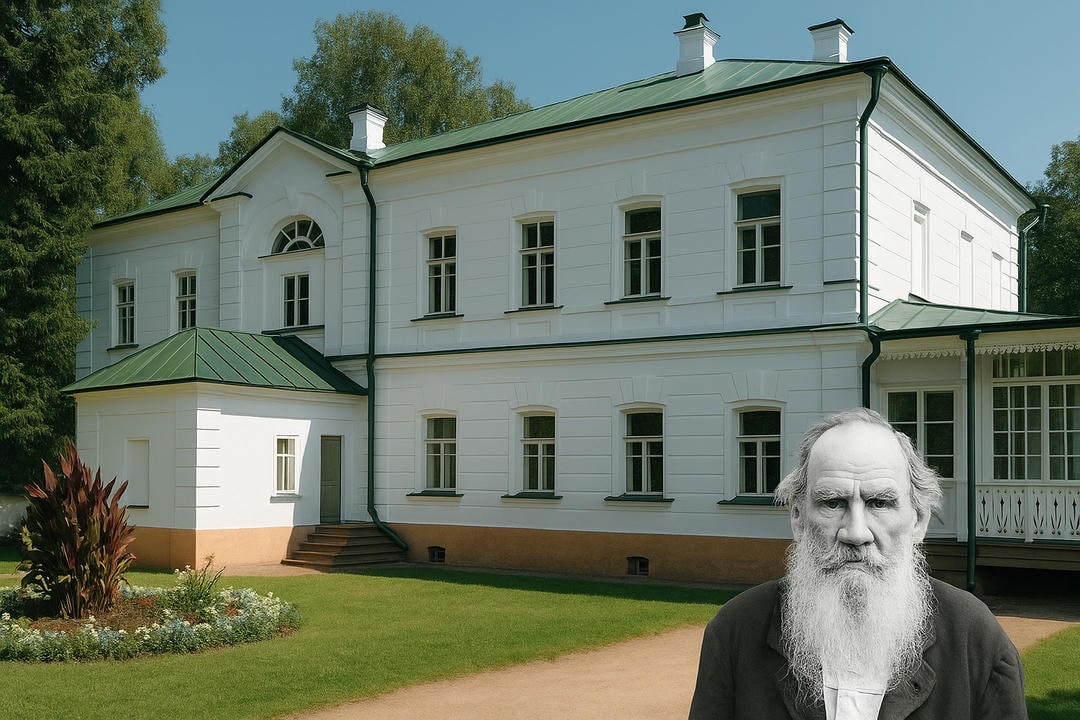Lake Svetloe in Siberia presents a fascinating case of survival against the harsh winter climate. Its geothermal warmth creates a unique microclimate, transforming it into a thermal oasis. This phenomenon enables swans to find refuge and sustenance amidst temperatures that plummet to -40°C. These resilient birds adapt their behavior to the environment, maximizing energy intake while minimizing exposure to the cold. The lake’s significance extends beyond swans, fostering a diverse ecosystem worth exploring further.
Introduction
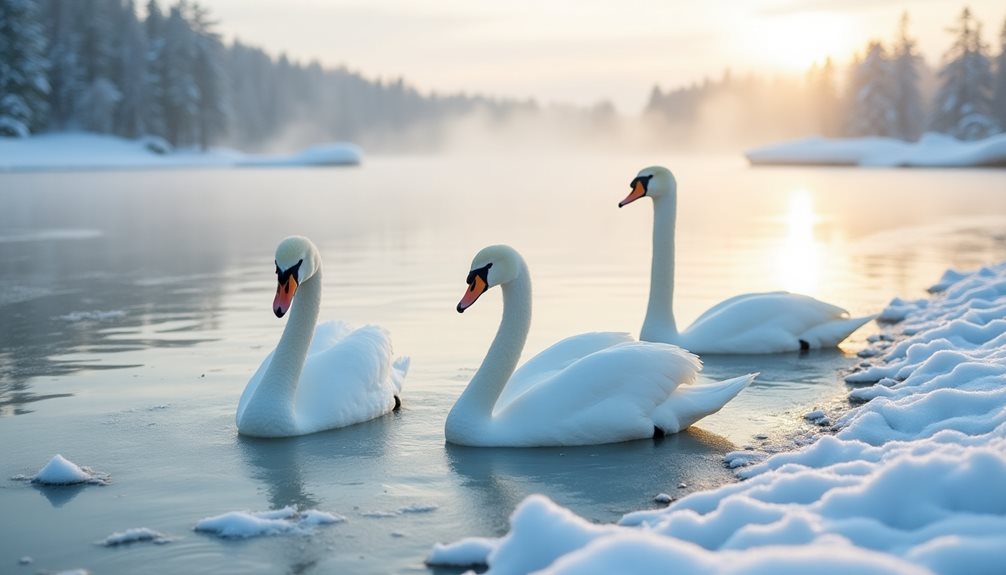
Lake Svetloe presents a unique ecological phenomenon as one of the few wintering grounds for swans in Siberia.
Unlike other regions where harsh winters drive swans southward, the thermal springs around Lake Svetloe create a microclimate that allows these birds to remain.
Nestled in the heart of Siberia, Lake Svetloe serves as an exceptional winter refuge for swans, a phenomenon that defies typical migratory patterns.
Unlike their usual journey to warmer regions, these swans exhibit unique wintering behavior by remaining in Siberia’s frigid climate. The lake’s thermal adaptations, owing to geothermal activity, create a microhabitat where temperatures stay above freezing, aligning with swans’ habitat preferences.
This rare convergence of factors enables the birds to thrive despite the harsh Siberian climate. Consequently, Lake Svetloe becomes a critical sanctuary, illustrating nature’s ability to offer swans a haven of freedom in unexpected places.
In Siberia’s unforgiving winters, where temperatures drop to -40°C, geothermal waters create lifelines for swans and aquatic life. Lakes like Lake Svetloe remain unfrozen due to underwater springs rich in minerals, which maintain water temperatures above freezing. These thermal havens sustain a resilient ecosystem, offering sanctuary from the biting cold and showcasing nature’s adaptability.
Adaptation
Swans in Siberia rely on communal roosting and strategic feeding patterns to conserve energy and survive extreme conditions. Their social structures and communication ensure safety and resource allocation, while sheltered nesting sites protect them from harsh weather. These behaviors highlight their remarkable resilience in balancing survival with community harmony.
Siberian lakes like Lake Svetloe contrast sharply with the Arctic tundra, where swans typically breed. The lakes’ thermal stability attracts swans during winter, influencing migratory patterns and breeding behaviors. This interplay underscores the ecological importance of preserving both habitats—tundra for breeding and geothermal lakes for refuge—to ensure swans’ long-term survival amid climate challenges.
Visitor Experiences
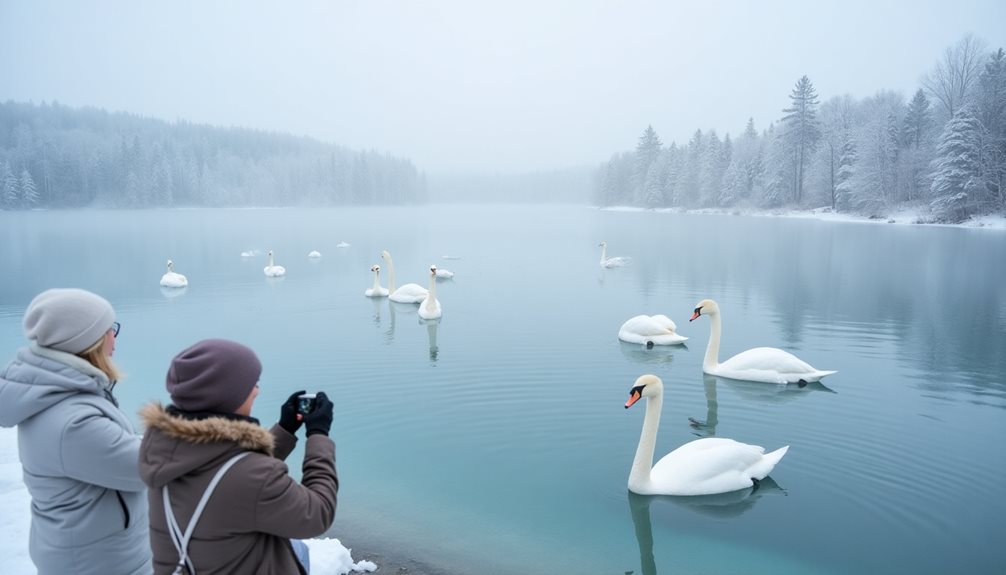
Siberia’s Altai Region is home to Lake Svetloe, locally known as Swan Lake, a remarkable natural sanctuary that defies the harsh Siberian winters. Amid temperatures plunging to -30°C, this small lake remains unfrozen thanks to geothermal springs, maintaining a constant water temperature of +4°C. This unique feature transforms the lake into a winter haven for wildlife and a destination for cultural and ecological exploration.
A Haven for Swans and Waterfowl
Lake Svetloe gained prominence in 1967 when the first group of swans—just 15 birds—arrived. Since then, the population has steadily grown, with over 500 swans now wintering at the lake annually. These swans migrate from their summer habitats in the Salekhard tundra near the North Pole, seeking refuge as northern lakes freeze over. Alongside swans, thousands of ducks and geese also gather at the lake during winter months, making it a vibrant hub of avian activity.
The lake’s ecosystem thrives on diverse interactions among bird species. Swans and ducks forage on aquatic plants, while diving birds like Common Goldeneyes and Goosanders hunt invertebrates. The reserve supports these migratory populations by providing 25 tons of feed each season, ensuring their survival during Siberia’s harsh winters.
Ecological Marvels of Lake Svetloe
Lake Svetloe spans just one kilometer in length and 400 meters in width, with a depth of two meters. Despite its modest size, its clear waters and geothermal springs create an ecological anomaly in Siberia’s frozen landscape. The springs keep the water warm enough to sustain life even when surrounding temperatures drop to -40°C.
The lake is not only home to Whooper Swans but also hosts other species such as Mallards, Mute Swans, Tundra Swans, and White-throated Dippers along its ice-free streams. Birdwatchers can spot Siberian specialties like Azure Tits, Ural Owls, and Grey Bullfinches nearby, adding to the richness of biodiversity.
A Cultural and Tourist Destination
Swan Lake is more than an ecological wonder; it is a site of cultural significance and tourism. Guided tours offer insights into the history of swan migrations and the Altai people’s deep connection with nature. Observation decks—including a five-meter-high platform—allow visitors to admire the majestic swans without disturbing them, striking a balance between human curiosity and wildlife conservation.
The lake is easily accessible from Barnaul via car or taxi, making it a popular destination for tourists seeking to experience Siberia’s natural beauty. Hotels near the reserve cater to visitors who come to witness this extraordinary phenomenon from November through March.
Why Visit?
Lake Svetloe is more than a winter spectacle—it’s a living classroom for nature lovers and a cultural gateway to Siberia’s resilience. Whether you’re a photographer, ornithologist, or simply someone drawn to the wild, this lake invites you to witness the magic of life persisting in the harshest of climates.
Amidst the vast, snow-capped landscapes of Siberia, a remarkable species of swan stands as a symbol of both natural and cultural significance. The Siberian swan, with its elegant form and captivating migratory patterns, has long been revered in the region’s folklore, weaving a rich tapestry of storytelling and tradition. Beyond their biological marvel, these majestic birds play a vital role in preserving the natural heritage of Russia, thanks to the dedicated efforts of the “Lebediny” sanctuary.
The Folklore of Siberian Swans
Siberian folklore is replete with tales that celebrate the swans’ presence as harbingers of seasonal change and embodiments of purity. These narratives, passed down through generations, often depict the swans as messengers between the earthly and celestial realms, symbolizing the intricate balance within Siberian ecosystems.
One such story recounts the annual return of the swans to Lake Svetloe, a ritual that is eagerly anticipated by local communities. As the swans gracefully glide across the lake’s surface, their arrival is marked by joyous celebrations and the sharing of traditional folklore. These stories, rich in symbolism and reverence, underscore the deep-rooted connection between the Siberian people and the natural world they inhabit.
The cultural significance of the Siberian swans extends beyond the realm of storytelling. In many Siberian communities, the swans are revered as emblems of purity, transformation, and the delicate balance between humanity and nature. Their presence is often seen as a harbinger of prosperity and harmony, with their migratory patterns closely tied to the rhythm of the seasons and the cycles of life.
The “Lebediny” Sanctuary
Nestled within the vast expanse of Siberia, the “Lebediny” sanctuary stands as a beacon of hope for the conservation of the region’s natural heritage. This dedicated wildlife preserve plays a pivotal role in safeguarding the migratory patterns and habitats of the Siberian swans, ensuring the continued survival of these majestic birds.
The sanctuary’s conservation efforts are multifaceted, ranging from habitat preservation to targeted wildlife protection measures. By implementing rigorous monitoring and research programs, the sanctuary’s team of experts works tirelessly to understand the swans’ unique ecological needs and ensure their well-being during the harsh Siberian winters.
In addition to its conservation work, the “Lebediny” sanctuary also serves as an educational hub, fostering awareness and understanding of the Siberian ecosystem. Through guided tours, interactive exhibits, and community outreach programs, the sanctuary aims to inspire visitors and local residents to appreciate the intricate balance of nature and the vital role that the Siberian swans play in maintaining it.
The significance of the Siberian swans extends far beyond their ecological presence; they are woven into the very fabric of Siberian culture and identity. The intertwining of natural conservation and cultural narratives underscores the holistic approach to preserving the region’s heritage, recognizing the swans as not just biological marvels but as integral components of the Siberian way of life.
By safeguarding the Siberian swans and their habitats, the “Lebediny” sanctuary not only protects the natural environment but also safeguards the rich cultural traditions and folklore that have been passed down through generations. This symbiotic relationship between the natural and cultural realms highlights the importance of adopting a comprehensive approach to conservation, one that acknowledges the interconnectedness of the physical and the intangible.
Conclusion
In the vast and captivating landscapes of Siberia, the Siberian swans stand as guardians of both natural and cultural heritage. Their elegant presence and captivating migratory patterns have long been woven into the fabric of local folklore, imbuing them with a profound significance that transcends their ecological role.
The “Lebediny” sanctuary, through its dedicated conservation efforts, plays a vital part in ensuring the continued survival of these majestic birds, thereby preserving the natural and cultural legacy of the Siberian region. By recognizing the intricate relationship between the swans and the region’s cultural identity, the sanctuary’s work underscores the importance of holistic approaches to conservation, where the preservation of the natural world is inextricably linked to the safeguarding of human heritage.
As we continue to navigate the complexities of our rapidly changing world, the Siberian swans serve as a powerful reminder of the profound connections that exist between the natural and the cultural realms. By honoring and protecting these magnificent creatures, we not only safeguard the ecological balance of Siberia but also preserve the rich tapestry of stories, traditions, and beliefs that have defined the region for generations.


